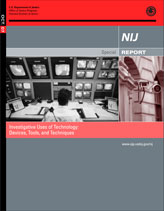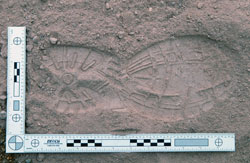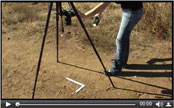|
View in browser: https://www.crime-scene-investigator.net/newsletter/0519.html
|
||
|
MAY 2019 | ||
| ||
|
Featured Video Presentation
|
||
|
Learn the basic technique for photographing footwear impressions. |
||
|
This Month's Featured Resource on the Crime Scene Investigator Network Website
|
||

This special report is intended to be a resource to any law enforcement personnel (investigators, first responders, detectives, prosecutors, etc.) who may have limited or no experience with technology-related crimes or with the tools and techniques available to investigate those crimes. It is not all inclusive. Rather, it deals with the most common techniques, devices, and tools encountered. Technology is advancing at such a rapid rate that the information in this special report must be examined in the context of current technology and practices adjusted as appropriate. It is recognized that all investigations are unique and the judgment of investigators should be given deference in the implementation of this special report. |
New CSI and Forensic Job Announcements
|
|
|
The most comprehensive listing of Crime Scene Investigation and Forensic To be notified of job openings as they are posted, follow us on Twitter: Job Posting Alerts |
||
|
Crime Scene Technician I
Fresno Police Department, Fresno, California, USA Final Filing Date: May 23, 2019 Crime Scene Technician I is an entry level class which processes crime scenes, takes photographs and collects and preserves evidence used in the identification and prosecution of criminals. <View complete job listing> |
||
|
Crime Scene Specialist I
Little Rock Police Department, Little Rock, Arkansas, USA Final Filing Date: May 23, 2019 To conduct crime scene searches to gather physical evidence to include latent fingerprints, hair, fibers, blood, projectiles, shell casings and tool and tire marks to assist in the arrest and conviction of individuals responsible for the crimes. <View complete job listing> |
||
|
Forensic Scientist Trainee
Pennsylvania State Police, Harrisburg, Pennsylvania, USA Final Filing Date: May 23, 2019 Participate in a structured training program designed to develop knowledge, understanding and technical skill related to drug identification, report preparation, and courtroom testimony. <View complete job listing> |
||
 |
||
|
DNA Analyst III - Serology/DNA
Institute of Forensic Sciences, Houston, Texas, USA Final Filing Date: May 29, 2019 Conducts scientific laboratory examinations and analyses of specimens submitted by forensic pathologists and law enforcement officers from medico-legal and criminal cases. Testing may include screening for the presence of biological fluids and DNA analysis using Polymerase Chain Reaction/Short Tandem Restraints (PCR/STR) based methods. <View complete job listing> |
||
|
Digital Forensic Investigator 1
Georgia Bureau of Investigation, Augusta, Georgia, USA Final Filing Date: May 10, 2019 assists in investigating criminal activity by performing digital forensic examinations of data stored on electronic devices. Documents and reports findings of examination for requesting law enforcement agencies. <View complete job listing> |
||
|
Latent Print Examiner
Gainesville Police Department, Gainesville, Florida, USA Final Filing Date: May 30, 2019 Analyzes friction ridge impressions and determines value for comparison and/or makes entries into the Automated Fingerprint Identification System (AFIS) and Integrated Automated Fingerprint Identification System (IAFIS). Compares friction ridge impressions with known impressions in accordance with established guidelines and accepted best forensic practices. Evaluates the data and makes appropriate conclusions regarding findings. <View complete job listing> |
||
|
Search for more job listings in Crime Scene Investigations and Forensics To be notified of job openings as they are posted, follow us on Twitter: Job Posting Alerts |
||
|
Other Resources on the Crime Scene Investigator Network Website
|
||
|
Not Subscribed to this Newsletter?
|
||
|
If you are not subscribed to this newsletter, you may subscribe with this link: SUBSCRIBE via email |
||
|
To Unsubscribe
|
||
|
To unsubscribe from future e-mail newsletters, please click here: UNSUBSCRIBE Copyright ©2019 Crime Scene Resources, Inc. Crime Scene Investigator Network |




